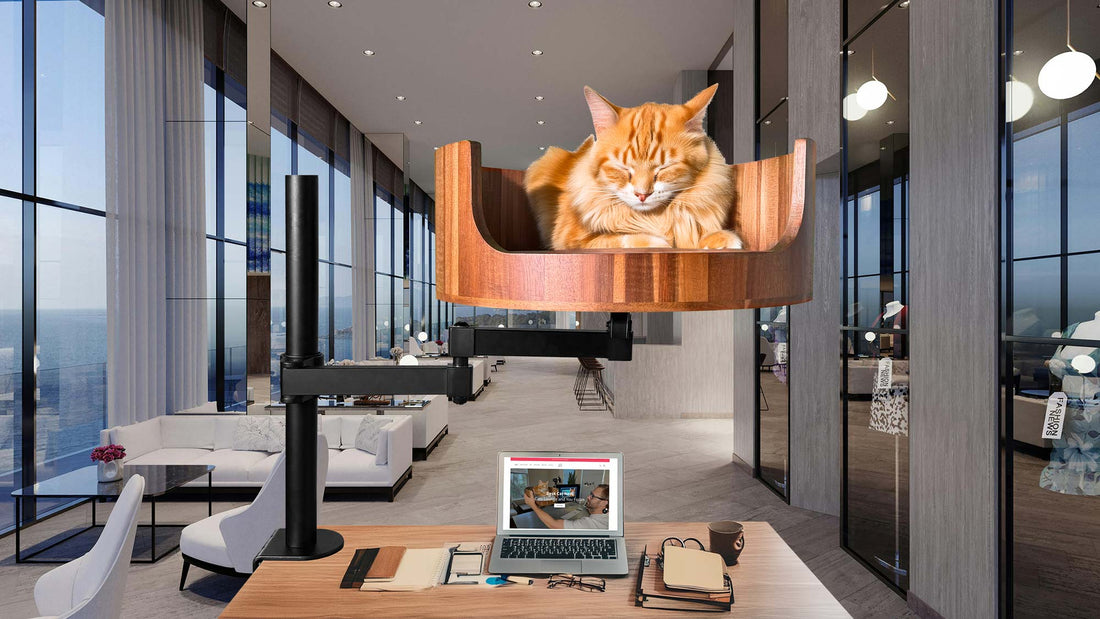
What Does It Mean When Cats Flick Their Tail?
Share
Have you ever wondered why your cat flicks its tail? The behavior of cats can be mysterious and intriguing, leaving many owners curious about what their furry companions are trying to communicate. In this article, we will explore the various reasons why cats flick their tails and what it could potentially mean for their mood and wellbeing.
From playful flicks to rapid swishing, a cat's tail can be a clear indicator of their emotions and intentions. Understanding this body language can provide valuable insight into your cat's state of mind and help strengthen the bond between you and your feline friend. Whether they are feeling agitated, anxious, or simply in a playful mood, decoding the meaning behind your cat's tail flicks can lead to improved communication and a deeper connection with your beloved pet. Join us as we delve into the fascinating world of cats and unravel the secrets behind their tail flicking behavior.
1. Cats flick their tails as a way to communicate their emotions and feelings.
2. Understanding tail flicking can help cat owners decipher their pet's behavior more effectively.
3. A slow, deliberate flick may indicate annoyance or agitation, while a rapid or twitchy flick could signal excitement or fear.
4. Context and other body language cues are important to consider when interpreting tail flicking behavior.
5. It is crucial for cat owners to pay attention to their cat's tail movements in order to provide appropriate care and avoid potential conflicts or misunderstandings.
Why do cats flick their tails?
Cats flick their tails as a way to communicate their emotions and feelings. It can indicate a range of emotions, from happiness and excitement to irritation or aggression. Understanding the context in which a cat is flicking its tail is crucial in deciphering its meaning. For example, a cat may flick its tail rapidly when threatened or agitated, but gently wag it when feeling content. By observing other body language cues along with tail flicking, cat owners can better understand their cat's current state of mind.
Common triggers for tail flicking
There are several common triggers that may cause a cat to flick its tail. One typical reason is overstimulation during petting or playtime. When a cat becomes overwhelmed or irritated, it may use tail flicking as a way to signal that it needs a break or space. Another common trigger is fearful or threatening situations where a cat may flick its tail rapidly as a warning signal. Other triggers include frustration, discomfort, or excitement. By identifying these triggers, cat owners can take appropriate actions to help their feline companions feel more comfortable and secure.
How to respond to tail flicking
When a cat flicks its tail, it is essential to pay attention to the context and other body language cues to understand the underlying message. In situations where a cat is flicking its tail due to overstimulation or irritation, it is crucial to give the cat a break and allow it to calm down. For fearful or threatening situations, it is essential to remove the source of stress and create a safe environment for the cat. In general, responding calmly and positively to tail flicking can help improve the bond between a cat and its owner, fostering better communication and understanding.
Frequently Asked Questions
What does it mean when cats flick their tail?
When a cat flicks its tail, it is usually a sign of agitation or annoyance. It can indicate that the cat is feeling stressed, upset, or ready to attack. It's important to pay attention to other body language cues to determine the exact meaning behind the tail flicking.
Is tail flicking always a sign of aggression?
Tail flicking is not always a sign of aggression, but it can be a warning sign that a cat is feeling threatened or uncomfortable. It's important to pay attention to the context in which the tail flicking is happening and to look for other signs of distress in the cat's body language.
How can I help my cat feel more comfortable?
If your cat is frequently flicking its tail, try to identify the source of their stress or discomfort. This could be due to changes in their environment, interactions with other pets, or health issues. Providing your cat with a quiet, safe space, enough mental and physical stimulation, and regular vet check-ups can help reduce their stress levels and prevent tail flicking.
Should I be concerned if my cat's tail is constantly flicking?
If your cat's tail is constantly flicking and you notice other signs of distress or aggression, it may be a good idea to consult with a veterinarian or a professional animal behaviorist. They can help determine the underlying cause of the behavior and provide guidance on how to address it effectively.
In conclusion, understanding why cats flick their tail is crucial for interpreting their behavior and mood. Providing a cozy and comfortable space like the Desk Cat Bed can help alleviate stress and anxiety in cats, ultimately reducing the likelihood of tail flicking. This innovative cat bed not only offers a secure and inviting environment for your feline friend to relax and unwind, but also promotes better overall well-being. Invest in a Desk Cat Bed today to ensure your cat's tail flicking is kept to a minimum and their happiness and comfort are maximized.



















































